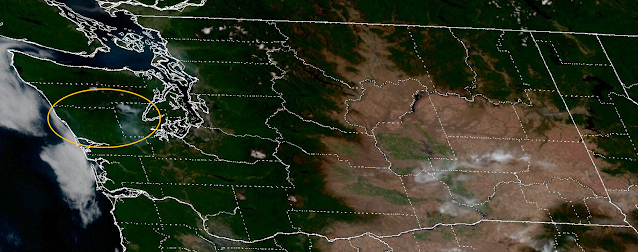Wednesday Smoke Recap
It was an interesting air quality scenario on Wednesday as smoke from the Bear Gulch Fire crossed the Cascades Tuesday night and settled over the Columbia Basin Wednesday morning.
In a "normal scenario," smoke trapped beneath an inversion layer will disperse and air quality will improve as the inversion breaks. But on Wednesday, smoke was trapped just above the morning surface inversion. As the inversion broke, the substantial smoke plume began to mix both up and down, and air quality began to deteriorate during the late morning hours. Air quality was mostly Moderate or Unhealthy for Sensitive Groups, though a few monitors and sensors did record a brief period of Unhealthy air.
The reduced fire activity at Bear Gulch has resulted in less smoke over eastern Washington Thursday morning, though there was some smoke trapped underneath the morning inversion. With less smoke overhead, we're seeing a more "normal" scenario play out and air quality is improving as the inversion breaks.
Two New Wildfires
With hot, dry, and windy conditions developing Wednesday afternoon, two new large incidents emerged. The Central Ferry Fire in southwest Whitman County grew to approximately 6,000 acres and remains 0% contained. Smoke impacts are confined to the immediate area surrounding the fire, particularly along the Snake River.
 |
| The Central Ferry Fire in Whitman County on August 13, 2024. Courtesy: Pullman News Radio |
In Lincoln County, the Crescent Road Fire is burning just south of the Spokane River and crossed into far northwest Spokane County Wednesday night. It's currently 779 acres and 0% contained. Fire activity has begun to increase late Thursday morning, and air quality near and just north of the fire will likely range from MODERATE to UNHEALTHY, especially along SR-231 and SR-291.
Fire danger decreases Friday into the weekend with widespread rainfall in and west of the Cascades. Increased relative humidity and scattered showers east of the Cascades will reduce smoke output from new and existing fires, and air quality is expected to improve.







.jpeg)








.jpg)






